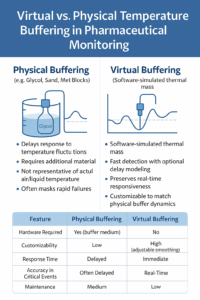Ensuring Environmental Conditions are Safe, Even During Off Hours
Differential Pressure
This is the second of a series of case studies sharing challenges and best practices used by Ambulatory Surgery Centers (ASCs). This case study shares how the use of continuous monitoring of Differential Pressure (DP) sheds light on the control of contaminants within ASC facilities.

Air temperature, humidity, and pressure are important factors in controlling infection and providing a safe, comfortable environment for patients and staff.
Quote from the CDC…

“Although significant progress has been made in preventing some healthcare-associated infection types, there is much more work to be done.
On any given day, about one in 31 hospital patients has at least one healthcare-associated infection.”
CDC March 2019 https://www.cdc.gov/hai/data/index.html
*Photo of 1822 operating theatre of St Thomas’ Hospital http://oldoperatingtheatre.com

Differential Pressure

Holding a tissue at the bottom of the door to determine the direction of airflow is one way to know if there is pressure in the room, however the tissue test only measures the direction and cannot indicate whether there is sufficient pressure to meet standards. A permanently installed device is required to continuously monitor DP. Recently surveyors are starting to ask to see records showing continuous monitoring.

The American Society of Heating, Refrigerating and Air-Conditioning Engineers (ASHRAE) created Standard 170 to serve as a guideline to ensure proper pressurization in facilities where patients need to be protected from contaminates that might cause infection. The Accreditation Association of Ambulatory Health Care (AAAHC), the Joint Commission, and the Center for Medicare and Medicaid Services (CMS) have adopted this standard
The ASHRAE standard states “Operating rooms shall be maintained at a positive pressure with respect to all adjoining spaces at all times. A pressure differential shall be maintained at a value of at least +0.01 in. wc = 0.00036 psi”
=> 2.5 Pascals (a more precise unit of measure)
Case Study

One of the strong values held by the Texas Health Orthopedic Surgery Center, located at Flower Mound Texas is Continuous Improvement: “We seek to relentlessly improve our performance in every area – clinical, operational, and financial – constantly pushing ourselves to new heights.”
After installing a system capable of continuously monitoring pressure, information became available that was not previously known. The chart below is an example of information used by the staff to work with their HVAC provider to make adjustments. As a result, constant positive air pressure is maintained in the OR day and night and over the weekends and holidays.


Additional steps were taken to minimize the amount of time the OR door was left open as the staff accessed the room. The chart to the right shows access is kept to a minimum and positive pressure is constantly maintained
Beyond Differential Pressure
The team at Flower Mound now has the tools to continuously monitor other critical assets at the facility, even during times when the facility is closed. Temperature, humidity, and pressure are all monitored and automatically logged ensuring optimal safety for patients.
A shout out to the Director of Facilities at SCA for input to the table below that summarizes monitoring recommendations.

Flower Mound Working Together
A new tool required a new process. Below is how the team takes action if environmental parameters drift beyond limits.

STEP 1 – The Medical Records team member arrives at 5:00 am to open the facility.
Before, they had to observe, write down, and log all the key parameters.
Now, with a single click on the green checkbox, a log is created showing, who checked, when they checked, and the current readings.
If action is required, a screenshot is texted to the Director of Nursing and the CEO.
STEP 2 – The Director of Nursing can forward information to the HVAC company to take any needed steps to fine-tune the system.

Step 3 – In addition to environmental parameters, assets like the tissue freezer containing up to $30,000 in tissue, is monitored 24/7. The staff can now be alerted and access the status of the facility via a moble phone in the event of lost power or equipement failure.
Kudos to the team at the Texas Health Orthopedic Surgery Center for their relentless pursuit to provide the best patient care available!
Written by Michael Altree


